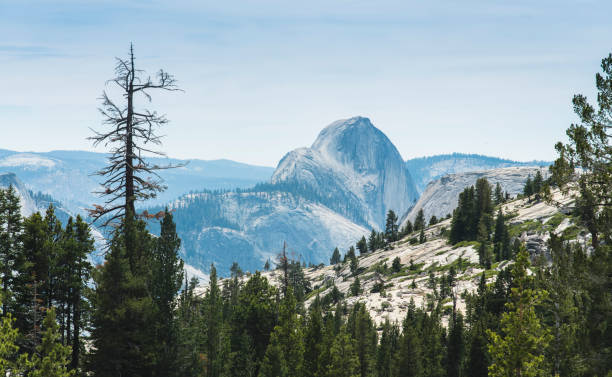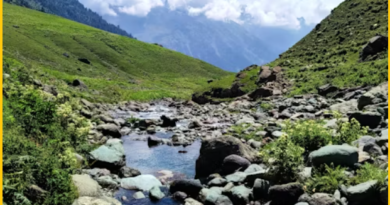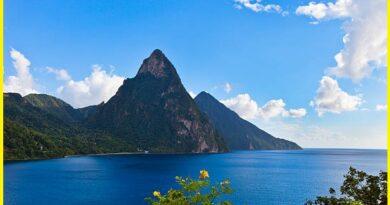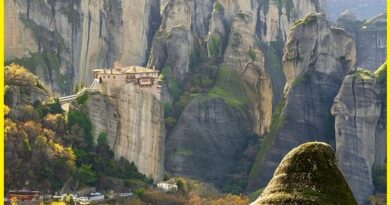Coastal Escape-Unwinding at El Capitan Canyon
El Capitan Canyon
El Capitan Canyon is a picturesque coastal retreat located in California, USA, near Santa Barbara. The Canyon is situated along the Gaviota Coast, just north of Santa Barbara. It’s nestled between the Santa Ynez Mountains and the Pacific Ocean, offering stunning natural scenery and a tranquil atmosphere.
The canyon offers a variety of accommodation options, including cedar cabins, safari tents, and yurts. These accommodations provide a rustic yet comfortable experience amidst nature, with modern amenities such as comfortable bedding, electricity, and private bathrooms in some units. Guests at El Capitan Canyon can engage in a range of outdoor activities, including hiking, mountain biking, and nature walks along the nearby trails. The nearby El Capitan State Beach provides opportunities for swimming, surfing, and beachcombing.
El Capitan Yosemite National Park
El Capitan is a prominent granite rock formation located within Yosemite National Park in California, USA. El Capitan is situated in the western part of Yosemite Valley, which is one of the most iconic and picturesque areas within Yosemite National Park. It rises nearly 900 meters from the valley floor.

El Capitan is composed of granite, specifically a type of granite called El Capitan Granite. It is renowned for its sheer vertical face, making it a popular destination for rock climbers worldwide. El Capitan is world-famous for its challenging rock climbing routes. Climbers come to Yosemite National Park specifically to attempt climbing El Capitan’s vertical face. The most famous route is called “The Nose,” which follows a prominent feature up the center of the rock formation.
El Capitan offers stunning panoramic views from various vantage points within Yosemite Valley. Visitors can enjoy views of El Capitan from spots such as Tunnel View, which provides a classic and iconic view of Yosemite Valley with El Capitan, Bridalveil Fall, and Half Dome in the distance. El Capitan holds cultural significance for the Native American tribes indigenous to the region, as well as for early European American explorers and settlers who documented its imposing presence.
Also Read- Kelso Dunes California simple reasons to visit Mojave Dune
Half Dome Hike
The Half Dome hike is among the most iconic and challenging hikes in Yosemite National Park, California. The trailhead for the Half Dome hike starts in Yosemite Valley. The most common starting point is the Happy Isles trailhead, which is accessible via the shuttle bus system during the peak season.
The round-trip hike to Half Dome is approximately 22.5 to 25.7 kilometers long, depending on the route. It is considered very strenuous and is not recommended for novice hikers. The hike involves steep inclines, rocky terrain, and exposure to the elements.
Hiking to the summit of Half Dome requires a permit, which is distributed through a lottery system due to its popularity and to manage the number of hikers on the trail. The lottery is held in March, and a limited number of permits are available each day during the hiking season, which typically runs from May through October.
Cables Section- The most challenging part of the Half Dome hike is the ascent up the cables section, a steep and exposed climb up the granite dome using metal cables and wooden planks for hand and foot support. Hikers must use gloves and harnesses to navigate this section safely.
Safety Considerations-Hiking Half Dome can be dangerous, especially during inclement weather or if the cables are wet or icy. Lightning storms, rockfall, and fatigue are additional hazards to consider. It’s essential to be prepared with proper gear, including sturdy footwear, plenty of water, food, and protective clothing. The reward for completing the Half Dome hike is breathtaking panoramic views of Yosemite Valley, including iconic landmarks such as El Capitan, Yosemite Falls, and the surrounding Sierra Nevada mountains.

Overall, hiking Half Dome is a challenging but rewarding adventure that offers hikers the opportunity to experience the natural beauty and grandeur of Yosemite National Park from one of its most iconic landmarks.
El Capitan Camping
El Capitan State Beach offers camping opportunities at El Capitan Canyon, which is a popular camping destination along the picturesque Gaviota Coast. El Capitan Canyon is situated within El Capitan State Beach, which is about a 20-minute drive north of downtown Santa Barbara along the scenic Pacific Coast Highway (California State Route 1).
El Capitan Canyon offers a variety of camping experiences, including traditional tent camping, RV camping, and more luxurious glamping options such as safari tents and cedar cabins. Visitors can choose the type of accommodation that best suits their preferences and needs. While camping at El Capitan Canyon, visitors can enjoy a range of amenities designed to enhance their camping experience. These amenities may include picnic tables, fire rings, restrooms with showers, and easy access to hiking trails and the beach.
Reservations are highly recommended, especially during peak seasons and holidays, as El Capitan Canyon can get busy and may have limited availability. Reservations can typically be made online through the California State Parks website or the El Capitan Canyon website. Camping at El Capitan Canyon provides opportunities for various outdoor activities, including hiking, birdwatching, beachcombing, swimming, surfing, and fishing. The surrounding natural beauty and coastal landscape make it an excellent destination for outdoor enthusiasts.
How To Reach El Capitan Canyon
If you’re flying to the area, the nearest major airport is Santa Barbara Municipal Airport, which is about a 40-kilometer drive from El Capitan Canyon. You can rent a car at the airport and drive to the resort. Amtrak operates train services to nearby Santa Barbara. From the Santa Barbara train station, you can either rent a car or take a taxi or rideshare service to El Capitan Canyon, which is approximately a 40-kilometer drive away.
The most common way to reach El Capitan Canyon is by car. If you’re traveling from Santa Barbara, take Highway 101 northbound for about 32 kilometers until you reach Exit 117 for El Capitan State Beach. Follow the signs for El Capitan Canyon from the highway exit. Some bus services, such as Greyhound and Santa Barbara Airbus, offer transportation to Santa Barbara from various cities in California. Once you arrive in Santa Barbara, you can rent a car or take a taxi to reach El Capitan Canyon.

El Capitan Canyon offers a shuttle service for guests arriving from Santa Barbara. This service may be available for an additional fee, and reservations may be required in advance. Contact the resort directly for more information about the shuttle service.



